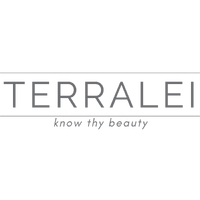Limited Time | Body Oils 20% Off!
Decoding Clean Beauty: Navigating Skincare Standards for a Healthier You
In an era where wellness and self-care reign supreme, the demand for clean beauty products has skyrocketed. But what exactly does "clean beauty" mean, and how can consumers decipher which skincare products truly adhere to these standards? Let's delve into the criteria used to classify skincare products as 'clean,' the importance of transparency, and how third-party certifications play a pivotal role in ensuring consumer trust and safety.
Understanding Clean Beauty Criteria
At its core, clean beauty revolves around the exclusion of harmful chemicals commonly found in skincare products. These chemicals, including parabens, sulfates, phthalates, and synthetic fragrances, have raised concerns due to their potential adverse effects on both human health and the environment. Clean beauty advocates argue for formulations that prioritize natural, non-toxic ingredients sourced responsibly.
But identifying clean beauty products isn't always straightforward. While some brands voluntarily disclose their ingredients and manufacturing processes, others may employ misleading marketing tactics, creating confusion for consumers. To navigate this landscape effectively, it's essential to familiarize oneself with key ingredients to avoid and to scrutinize product labels diligently.
Transparency and Third-Party Certifications
Transparency lies at the heart of clean beauty standards. Brands committed to transparency openly share detailed information about their ingredients, sourcing practices, and manufacturing processes. However, to ensure credibility and accountability, third-party certifications play a crucial role.
Organizations such as the Environmental Working Group (EWG), Leaping Bunny, and the Clean Label Project offer certifications that verify a product's adherence to clean beauty standards. These certifications provide consumers with assurance that the products they purchase meet stringent criteria for safety and sustainability. By looking for these certifications on product labels, consumers can make informed decisions and support brands that prioritize their health and well-being.
The Significance of Clean Beauty Standards for Consumer Health
Scholarly research underscores the importance of clean beauty standards in safeguarding consumer health. Studies have linked certain chemicals commonly found in skincare products to a range of health concerns, including hormone disruption, allergies, and even cancer. By opting for clean beauty alternatives, consumers can minimize their exposure to potentially harmful substances and mitigate associated health risks.
Moreover, clean beauty extends beyond individual health concerns to encompass broader environmental and social implications. Sustainable sourcing practices, cruelty-free formulations, and eco-friendly packaging contribute to a more ethical and environmentally conscious industry. As consumers become increasingly mindful of their purchasing decisions, the demand for clean beauty products continues to grow, driving positive change within the beauty industry.
To sum it up, understanding clean beauty standards empowers consumers to make informed choices that prioritize their health and well-being. By familiarizing themselves with clean beauty criteria, seeking transparency, and looking for reputable third-party certifications, consumers can navigate the vast array of skincare products with confidence. Together, we can embrace a cleaner, healthier approach to beauty that benefits both individuals and the planet.
References:
1. Grand View Research. (2022). Clean Beauty Products Market Size, Share & Trends Analysis Report by Product (Skincare, Haircare), by Distribution Channel (Online, Offline), by Region, and Segment Forecasts, 2022-2030.
2. Darbre, P. D. (2019). Endocrine Disruptors and Human Health: Could Scented Cosmetics and Personal Care Products Be a Hidden Source? NCBI.
3. Figueiredo, C. S., et al. (2020). Phthalate exposure and children's neurodevelopment: A systematic review. Environmental Research, 184, 109352.
4. Kwapniewski, R., et al. (2019). Parabens and Their Effects on the Skin and Body. NCBI.
5. Clean Label Project. (2023). Clean Label Project Certification Standards.
Display prices in:USD
